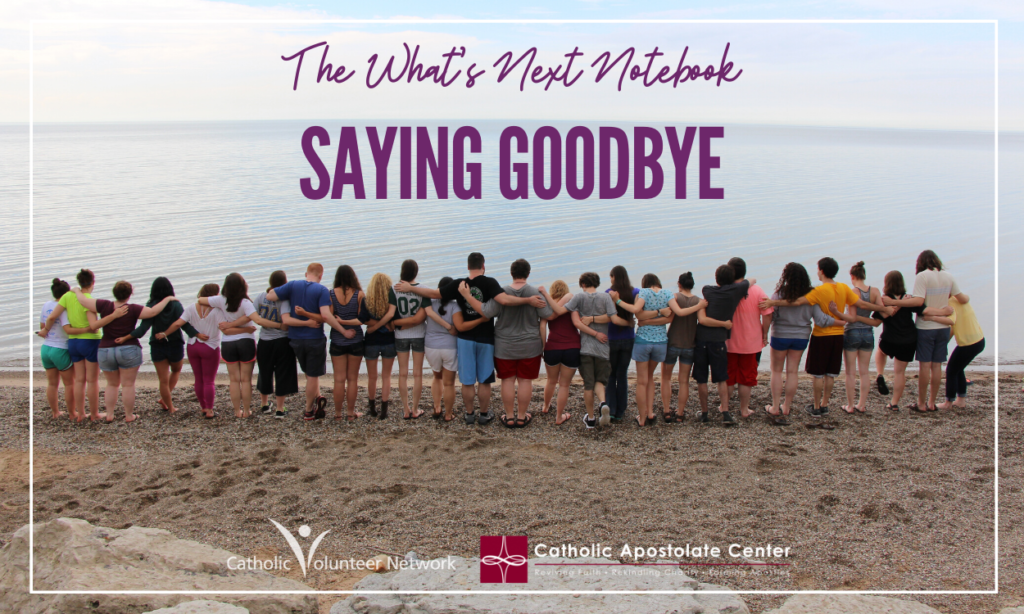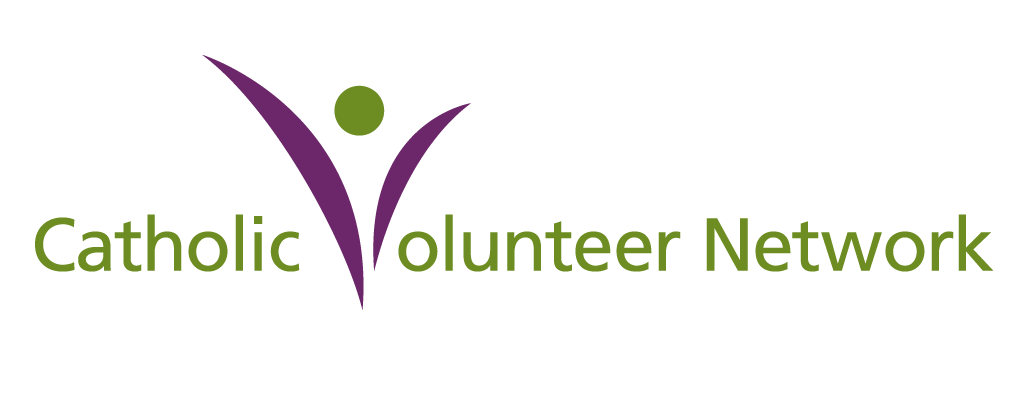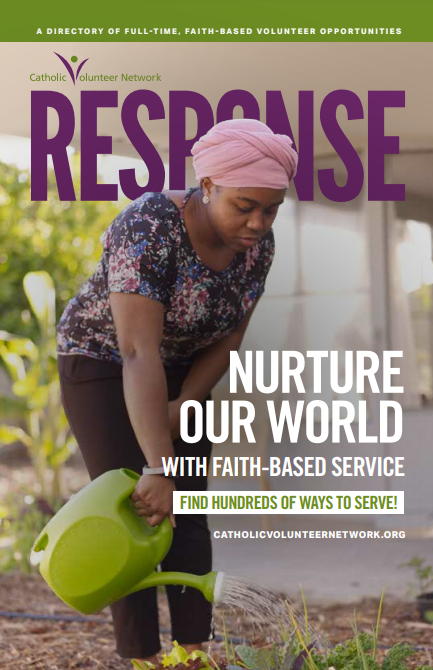This blog is part of our #WhatsNext series for former volunteers, inspired by the What’s Next Notebook resource from Catholic Volunteer Network and Catholic Apostolate Center. In each blog, we will explore helpful tips for looking back on your volunteer experience, saying goodbye, determining your next steps, and sustaining your spiritual growth during the transition to “life after volunteering.”
Introduction
Perhaps the most difficult part of completing your year of service is the process of saying goodbye to the community you have built. However, your goodbyes are an important step in the transition process. In today’s blog, we’ll explore how taking time to say goodbye will help you feel a sense of closure and enable you to move on.
Reflection
Leaving a volunteer placement and community is a major transition. William Bridges, a renowned transitions expert, presents a framework for understanding transition that may be helpful to you. He makes an important distinction between change and transition – change occurs outside of us, e.g., leaving a volunteer community or starting a new job, and transition is the internal adjustment we make as change occurs. Each change we experience must be accompanied by a transition in how we think and feel about ourselves, others, our priorities, and actions. In the following section, we present Bridges’ ideas about the three phases of transition, and suggest skills you may find helpful in making the transition from volunteering. As you read through the different stages, identify the stage you are currently experiencing. Highlight the suggestions that speak to you the most. Revisit these pages over time to reflect on the ways your perspectives have changed.
Bridges’ Three Phases of Transition
- Phase One: Letting Go
- Phase Two: The Neutral Zone
- Phase Three: New Beginning
Phase One: Letting Go
A transition begins when we acknowledge a loss and let go of a past identity. To successfully transition, we need to deal adequately with endings, with their consequences, and with the risk of letting go.
What’s at Risk?
Failure to let go could…
- Lead to a subsequent disabling, chronic, or unexplained sense of loss.
- Foster the development of unhealthy attachment to living in the past.
- Delay consideration of new possibilities.
What’s Possible?
Letting go…
- Allows us to better handle the grief caused by loss/change.
- Helps us, following a loss, to face the uncertainty of the Neutral Zone.
- Gives us a chance to grow in new ways.
- Allows us to more aptly consider new possibilities in the Neutral Zone.
Suggestions for Letting Go
- Develop a clear picture of what is actually going to change.
- Be honest about what you are really losing, including losses that are obscured by the obvious loss.
- Allow yourself time to grieve.
- Discern ways to compensate for the loss.
- Define clearly what’s over and what’s not.
- Mark or celebrate the ending.
- Honor the past rather than denigrate it.
- Give yourself a piece of the past to carry forward.
- Be open to new understandings and values connected with the new beginning to which you are transitioning.
Phase Two: The Neutral Zone
This is the time when the old way is gone, but our new identity is not yet clear. Marvelous growth is possible in this phase.
What’s at Risk?
During this time…
- Old weaknesses can re-emerge.
- We can become stagnant in self-doubt.
- Instead of pursuing new possibilities productively, we may expend our energy by simply coping.
What’s Possible?
This is a time when…
- Through creativity, we can experience breakthroughs, rather than breakdowns.
- We can break out of the false belief that whatever is, is right.
- Discovery, innovation, and personal enhancement are most possible.
Suggestions for The Neutral Zone
- Recognize the journey from one identity to another is hard and takes time.
- Expect ambiguity and confusion.
- Resist premature closure on a decision.
- Understand that this is a time of enormous change that needs to be managed.
- Ask questions; seek new solutions and new identities.
- Be creative; explore new and unusual ways of getting things done. Use both sides of the brain; shift perspectives.
- Re-define/Re-orient yourself: use the uncertainties of the Neutral Zone as opportunities for creative growth.
- Give yourself realistic, short-term objectives; keep track of good ideas.
- Embrace setbacks and losses as entry points for new solutions.
Phase Three: New Beginning
This final phase starts when we commit to new values and attitudes, and to a new identity. The new beginning is when we have made the interior conversations and convincingly see ourselves in a new role, relationship, or situation.
What’s at Risk?
New beginnings can…
- Reactivate old anxieties associated with an ending of the old way.
- Trigger memories of past failures and their associated loss of self-esteem.
- Frighten us because they call for a new commitment.
What’s Possible?
We can experience…
- A strong sense of confidence that we know who we are.
- A celebration of having made a successful transition.
- A sense of well-being with where we are in our lives and where we are going.
Suggestions for a New Beginning
-
- Recognize that, while the start of an external change follows the timing of a preset schedule, beginnings follow the timing of the mind and heart.
- Stay focused. Keep in mind the purpose of your transition. Think about the ways the start of the external change is different from the beginning of your new identity.
- Give yourself quick successes, even if small, for they are affirming.
- Create a mental picture of the new beginning; use symbols of the new identity to reinforce it.
- Celebrate the successful beginning at the end of a transition. Reward yourself for having accomplished the transition. Have fun!
Thank you for diving into our #WhatsNext series! Next week, we will explore the theme of Going Home, in which we will discuss tips for transitioning into “life back home” – even if “home” is a different place or feeling than it was previously.
Read more blogs in this series by visiting our blog and clicking the #WhatsNext icon!
Be sure to register and receive all our resources for former volunteers, including the What’s Next Notebook and our Weekly Job Bank, by clicking here!





 Thousands of faith-based service opportunities can be at your fingertips with the RESPONSE. Download the latest edition today!
Thousands of faith-based service opportunities can be at your fingertips with the RESPONSE. Download the latest edition today!
